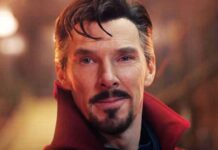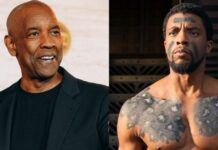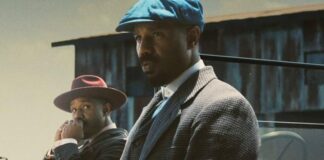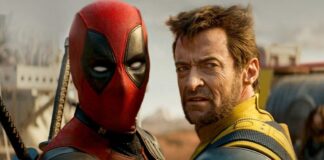
The Marvel Cinematic Universe has an immense following and is undeniably among the world’s most cherished franchises. Within this cinematic treasure chest, the 2008 post-credit scene in “Iron Man” stands as a prime illustration. It’s the moment when Nick Fury unveils his grand design to assemble the Avengers, a pivotal revelation that altered the game, my friends.
As the MCU’s cinematic odyssey continues to unfold, we’ve taken it upon ourselves to curate a tantalizing top 10 list. These are the scenes that will linger in our collective memory, whether they shine with brilliance or falter into infamy within the MCU. Get ready for a cinematic rollercoaster ride!
Good: “Captain America: The Winter Soldier” – Unmasking Nick Fury’s Deception and the “Pulp Fiction” Connection
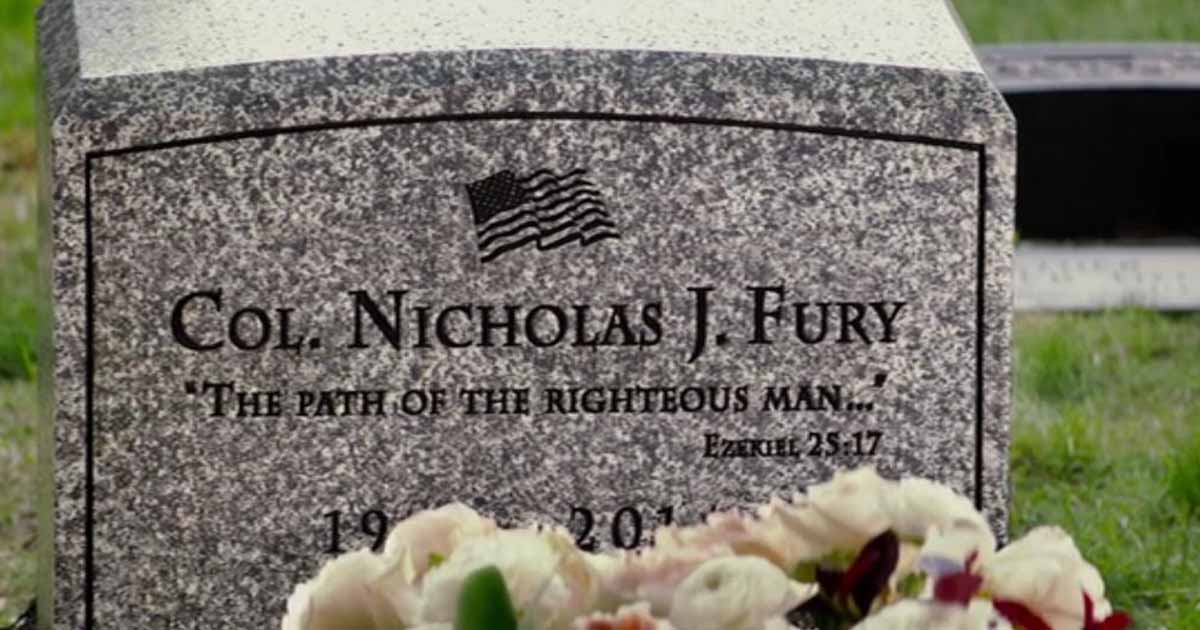
Within “Captain America: The Winter Soldier,” Nick Fury, the masterful spy of the MCU, astounds us by orchestrating his own faux demise, a clever ploy to outsmart Hydra. Even after defeating their adversaries, he sustains this charade by erecting a tombstone in his honor. But for vigilant fans who pause to investigate, an intriguing revelation awaits.
Trending
The gravestone displays a snippet of a biblical verse, which might not immediately strike as noteworthy. Yet, upon a more detailed examination, it unmistakably reveals itself as Ezekiel 25:17, renowned for its opening words, “The path of the righteous man.” Cinephiles, of course, instantly identify this verse as the very same one delivered by Samuel L. Jackson‘s character, Jules, in the iconic film “Pulp Fiction.” The reference provides amusement in and of itself, but when viewed as a commentary on Fury’s role as a consummate “actor,” it takes on an additional layer of humor. In this context, Fury’s performance deceives the world with remarkable finesse.
Bad: Thor: Ragnarok — The Heartbreaking Demise of The Warriors Three
The downfall of The Warriors Three in “Thor: Ragnarok” emerges as a scene that left a significant number of fans with a sense of disheartenment. Hela’s abrupt arrival in Asgard and her swift disposal of these steadfast characters, while not being central to the plot, evoked a discordant note. Despite not stealing the spotlight, they had consistently provided support in Thor’s adventures, having come to his aid on previous occasions. Witnessing Hela vanquish them in a matter of seconds undeniably carries a poignant sting. This sequence marks the conclusion of their journey in the Thor narrative, relegating these once-significant figures to mere casualties at the hands of the Goddess of Death. Yet, amidst this grim turn of events, Lady Sif’s survival offers a glimmer of hope, albeit against the backdrop of tragedy.
Good: “Captain America: The Winter Soldier” — A Watershed Moment in the MCU Timeline
The Russo Brothers took the helm in the second Captain America installment, introducing a seismic shift in the MCU’s timeline. Uncovering Hydra’s clandestine infiltration and thriving existence within S.H.I.E.L.D. sent shockwaves reverberating through the storyline, placing Captain America in a precarious position with his own employers. Following the audacious attack on Nick Fury, the super-soldier gains a keen awareness of the internal threat when he finds himself cornered by no fewer than ten adversaries within the confines of an elevator. Displaying unwavering confidence in his exceptional skills, he offers them a moment of reflection before taking it upon himself to subdue the entire group. Amid a backdrop of political turmoil, this scene serves as a poignant testament to Captain America’s unmatched combat prowess.
Bad: “Black Panther” Grapples with a CGI Showdown that Strays from its Exceptional Fight Choreography
“Black Panther” impresses with its well-choreographed fight scenes, including T’Challa and Killmonger’s thrilling battles. However, the film disappoints by deviating from these strengths in its final showdown, opting for lackluster CGI. The use of motion capture technology diminishes the impact, and the vibranium mine setting is visually unappealing. Despite this, a profound exchange between Killmonger and T’Challa stands out, although it comes after a lackluster action sequence.
Good: “The Avengers” Unleashes Iconic Moments That Define a Superhero Era
The MCU’s inaugural superhero ensemble film offers a treasure trove of iconic moments that have indelibly shaped the franchise. The climactic battle in New York, where the Avengers confront the Chitauri invasion, affords a tantalizing glimpse into the immense potential these heroes harness when united. A pivotal juncture arrives as Bruce Banner seamlessly transitions into the formidable Hulk, all the while coolly intoning the now-famous phrase, “I’m always angry.” In that very moment, the Avengers seamlessly coalesce into a formidable force. This harmonious blend of collective action sequences and witty repartee satiates fans’ fervent desires for such a momentous collaboration. Moreover, this scene serves as a cornerstone for future installments within the Avengers series.
Bad: “Avengers: Infinity War” Unveils the Costly Consequences of Star-Lord’s Momentary Lapse
After effectively containing Thanos, the Avengers locate themselves on Planet Titan, undertaking a quest to wrest the Infinity Gauntlet from the grip of the deranged Titan. In a pivotal moment characterized by emotional impulsiveness and obscured judgment, Star-Lord seizes the chance to question Thanos about the whereabouts of Gamora. This decision initiates a chain of unfortunate events.
Nebula, rather than discerning the situation with precision, conveys to Quill her belief that Thanos may have sacrificed Gamora to acquire the Soul Stone. Iron Man beseeches Quill to maintain his composure, but he succumbs to his emotional turmoil, spiraling into an uncontrollable frenzy and attacking Thanos. This impetuous act rouses Thanos from his trance, permitting him to regain the upper hand.
This particular segment of the film incurred the wrath of fans, who identified it as the pivotal moment directly responsible for the Avengers’ ultimate undoing in “Infinity War.” The rationale behind their sentiment is abundantly clear.
Good: “Doctor Strange” — A Mind-Bending Visual Journey into the Marvel Cinematic Universe
Doctor Stephen Strange’s induction into the MCU is nothing short of a breathtaking visual extravaganza. As the mentally fractured and arrogant Stephen arrives at Kamar-Taj, the hallowed abode and training grounds of the Masters of the Mystic Arts, he steps into a realm of boundless wonder. Under the tutelage of the Ancient One, masterfully portrayed by Tilda Swinton, Stephen’s eyes are unveiled to the kaleidoscope of infinite universes, treating the audience to one of the most visually captivating spectacles in the realm of Marvel cinema.
As Stephen embarks on his astral journey through dimensions, this entire sequence is a sumptuous feast for both the eyes and the imagination, unveiling visuals that may initially defy full comprehension. Astonishingly, even 7 years after the film’s debut, this particular scene continues to hold its own against the deluge of VFX-laden moments in subsequent cinematic endeavors.
Bad: When the Stakes Lose Their Edge: The Impact of Action Scenes on Character Peril in “Guardians of the Galaxy: Vol. II”
At the heart of a captivating action scene lies the intensity of the stakes. The idea that a character, especially one we hold dear, could meet their demise in the heat of battle adds a profound layer of significance to the scene. Conversely, when characters navigate perilous situations with apparent ease, the stakes lose their edge. This is evident in the crash landing sequence on Planet Ego in “Guardians of the Galaxy: Vol. II.” While undeniably delivering an electrifying spectacle, it becomes a test of credibility to accept that Drax could genuinely be imperiled by another character, especially after witnessing him tossed about like a helpless ragdoll, attached to a plummeting spacecraft.
In reality, the sheer force of the whiplash, compounded by numerous collisions with trees and a harrowing skid across vast forest terrain, would likely have resulted in his demise. This particular scene diminishes the tension in subsequent action sequences, leaving the impression that Drax can survive nearly any perilous situation without genuine consequence.
Good: “Captain America: Civil War” Unveils a Heart-Wrenching Turning Point
In the midst of “Civil War,” an exceptionally poignant and enthralling sequence unfolds. As the narrative reaches its climactic conclusion, a stunning revelation emerges: it was the brainwashed Bucky, known as The Winter Soldier, who carried out the tragic murder of Tony Stark’s parents. What intensifies the emotional impact is the revelation that Steve Rogers had been privy to this harrowing secret for years, choosing to remain silent. This revelation fractures their once unassailable bond, culminating in a visceral and intense showdown. Despite Iron Man’s palpable disadvantage against the formidable super-soldiers, Captain America decides to spare his life. This indelible scene signifies the conclusion of an era, marking the definitive end of a once-celebrated friendship between two of the MCU’s most iconic figures.
Bad: “Avengers: Infinity War” – When the Guardians’ Heroic Victory Ends in Ashes
In a brief and dialogue-driven encounter, Thor imparts to the Guardians, without the aid of flashbacks or cinematic cues, the devastating news that Planet Xandar had suffered annihilation, with the Power Stone stolen by Thanos a mere week earlier. Much like the understated demise of the Warriors Three, this moment deserved a more substantial treatment, as the final cut regrettably fails to fully emphasize the gravity of this revelation. While such a reaction might have been acceptable for any other generic planet housing the stone, it feels somewhat disconcerting to witness the Guardians responding with relative nonchalance to the tragic fate of the very planet they had previously joined forces to rescue.
The Marvel Cinematic Universe paints a vast cinematic canvas, weaving together moments that may sometimes fall short of expectations with extraordinary scenes that set new benchmarks for the superhero genre. As a whole, the franchise remains a consistent source of exceptional entertainment and remains the paragon for superhero movies. My personal journey through the Marvel Cinematic Universe commenced when I was just 10 years old, and I eagerly anticipate the future, ready to embrace both the potential for greatness and the inherent challenges it may present.
Follow Us: Facebook | Instagram | Twitter | Youtube | Google News



 Follow Us
Follow Us

